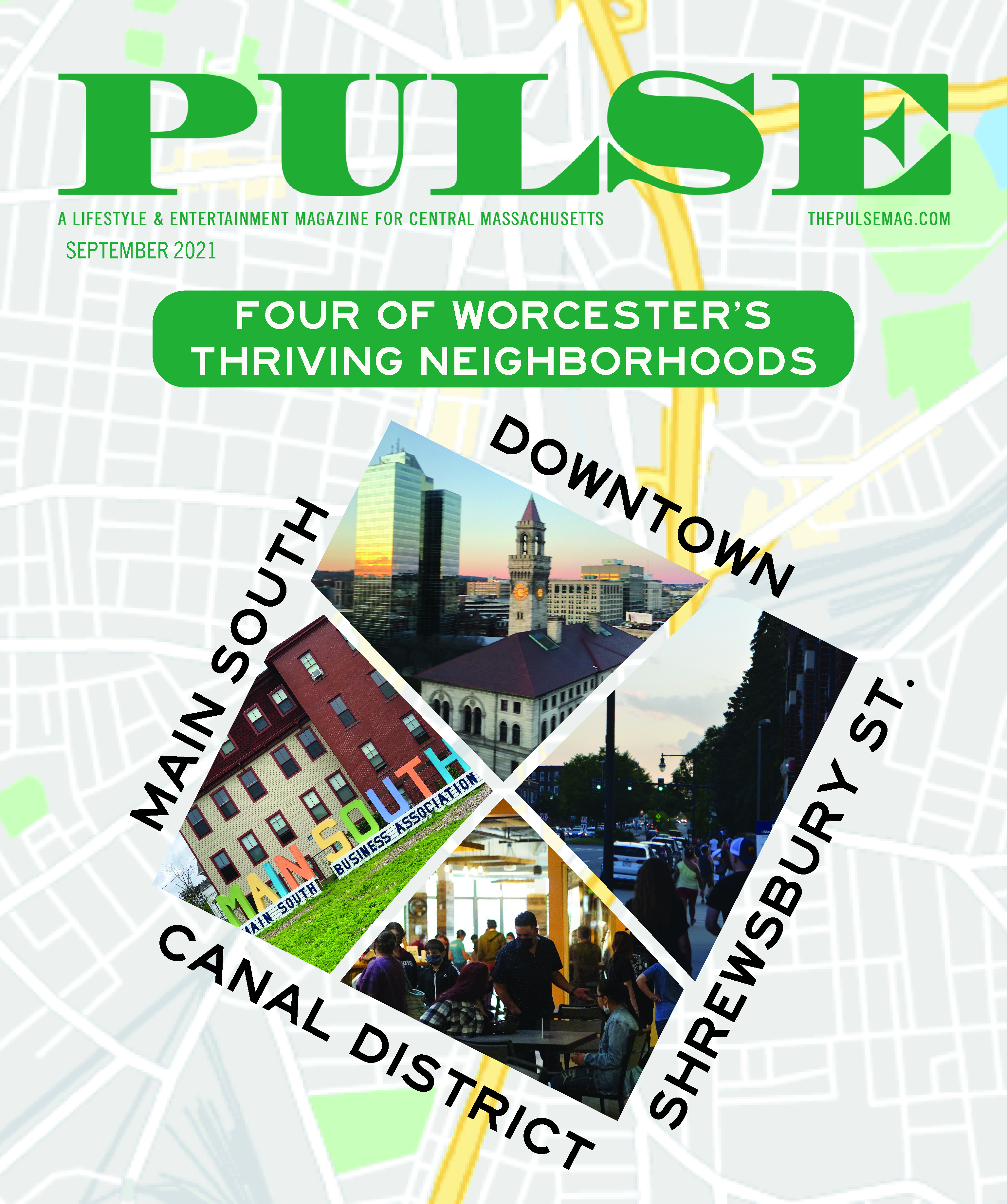
Rachel Shuster
Worcester is a thriving city with a growing vibrancy that permeates throughout each neighborhood. Whether you’re born and bred in Worcester or new to the city, you can’t help but notice the city’s transformation.
When we talk about transformation and growth, four of Worcester’s neighborhoods really stand out – Downtown, the Canal District, Shrewsbury Street and Main South. All have a rich history which is the foundation for the city of Worcester, but have seen tremendous economic and cultural development and vitality emerge over the past several years, with only continued growth for the future.
Let’s take a closer look at Worcester’s four!
Downtown Worcester
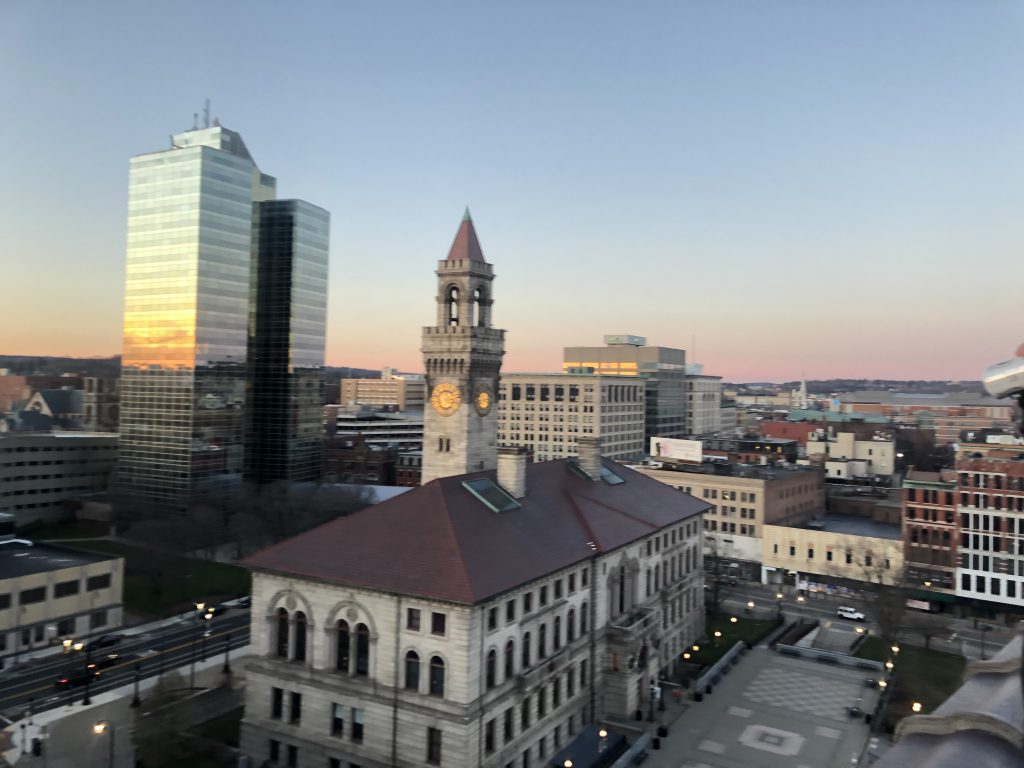
For City Manager Edward M. Augustus, Jr., the Downtown Worcester neighborhood has been one of the most profound changes in the last 10 years.
“Worcester, like a lot of older industrial cities, had a vibrant downtown with specialty stores like dress shops, kitchenware, etc.,” Augustus says. “Then in the late 60s early 70s, the big thing was malls and suburban malls. Worcester hollowed out in the downtown area. There was a change in shopping and people’s habits and that certainly affected the downtown.”
Other factors also contributed to the shift in Downtown. “There were also five high schools in the downtown neighborhood at one time,” Augustus says. “Thousands of kids and employees would come down and shop or go out after school in the neighborhood, but over time, those schools shut down and took away all that traffic and vibrancy. Because of the empty storefronts and partially filled office buildings, at 5:30, downtown became a ghost town.”
With focus on bringing in businesses, restaurants and housing over the years, the Downtown neighborhood now has restored its vibrancy with a new depth.
“Now we have created a Downtown that is truly a neighborhood with thousands of people living in the neighborhood,” Augustus says. “Now, If I’m leaving Downtown after work to go home, I’m replaced with someone coming home to Downtown.”
The area has truly become a neighborhood where people can live and thrive. “People who live there in the new housing developments like 145 Front at City Square may walk out to 110 Grill or Deadhorse Hill to have dinner or the Beer Garden for a drink,” Augustus says. “I see people jogging and exercising and walking dogs. That didn’t happen two years ago. That’s been the most profound change – getting the residential component in the mix.”
Development projects and businesses have also attracted people to the neighborhood. The Hanover Theatre and Conservatory for the Performing Arts, Mechanics Hall, DCU Center and Worcester Public Library all bring people in and entice them to keep coming back.
“We want to create density for all those people – they need to eat, hang out, buy their groceries, have their everyday needs,” Augustus says. “That helps attract those businesses. Businesses follow people. Having a culture, an infrastructure and vitality on the street – you wouldn’t think twice about walking around. Those feet on the street are going to give the perception and the reality of a safe and vibrant neighborhood.”
Of course, even a thriving neighborhood experiencing ongoing areas of opportunity. “We are not immune to challenges like panhandling, homelessness, mental health, the opioid epidemic – there is a visible presence in Downtown,” Augustus says. “That can create impressions – or a reality – that make people uncomfortable.” Just as there are continued efforts to bring vibrancy and life to Downtown, the efforts to address these issues are just as critical.
“My dream is to have every building fully participating in the renaissance that is Worcester – no buildings that are half full, no floor in those buildings out of commission or not up to code, no empty storefronts,” Augustus says. “If you go back and look at the urban renewal plan from 5-6 years ago, we targeted properties in Downtown, and we’ve done about 85 percent of that. That wasn’t tearing down buildings but rebuilding, renovating, and bringing in new owners. Now the market is doing that for us – the market is creating demand.”
Main South
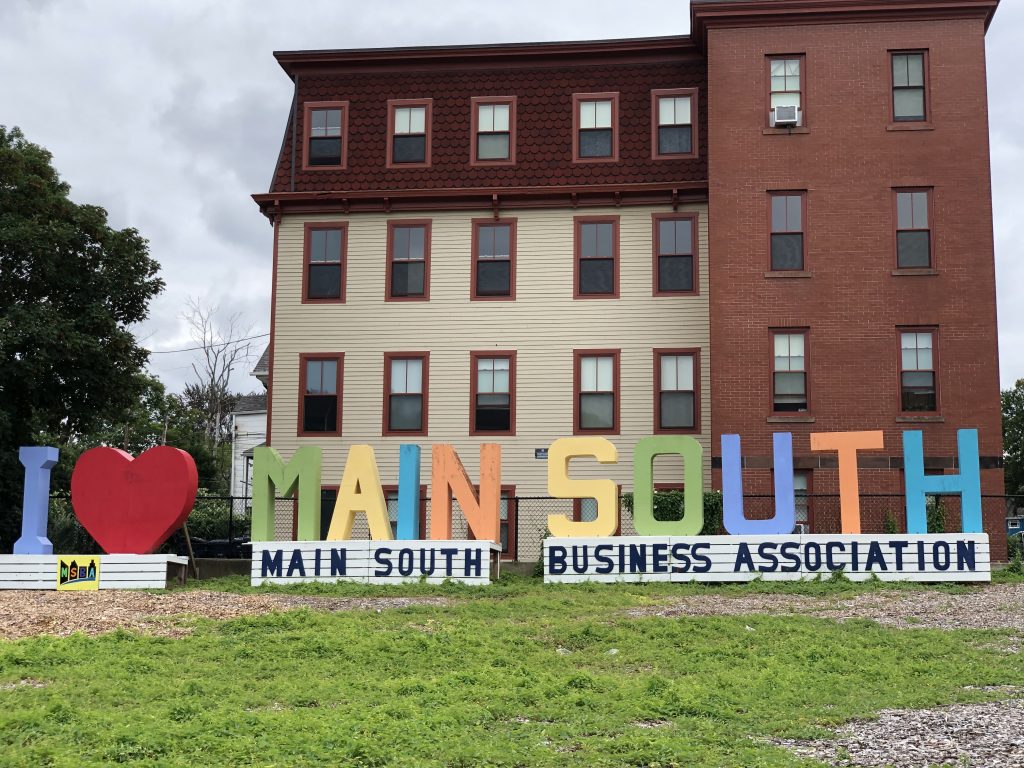
“Main South is a dynamic, diverse, and close-knit community filled with wonderful small businesses and multigenerational families,” says Casey Starr, Director of Community Initiatives for the Main South Community Development Corporation (CDC). “There is a rich cultural tapestry represented here and reflected in the art, culture, and food of the neighborhood. For many decades, Main South has been a port of entry into the city for many immigrants – a place where people from all over the world call home and are welcomed.”
Starr moved to Main South for college in 2003 and has lived in Main South from 2003 until 2017. “It will always be my favorite neighborhood of Worcester,” she adds.
Main South has a rich history rooted in community. “Main South has an industrial history and once served as the hub for manufacturing and employment opportunities for residents,” Starr says. “After the factories shut down and/or moved, the neighborhood struggled through an economic decline. The Main South CDC was incorporated in 1986 due to a lack of safe and affordable housing and the need for an organization that could bring about sustainable change and be governed by residents. One of the best parts of the Main South neighborhood is the strong partnerships that exist amongst agencies, institutions, and community members who all work in collaboration to improve the community.”
Several planning and development projects have occurred over the years, creating just what the Main South CDC set out for – a revitalization of the neighborhood. The Kilby-Gardner-Hammond Revitalization Project provided affordable housing units, the construction of a new Boys & Girls Club and a new bike path. The Main South Byrne Criminal Justice Innovation (BCJI) Project set out to develop a community-based and comprehensive approach to addressing the physical, social, and gang-related disorder that was persistent in the neighborhood for decades.
“Main south is a dense and vibrant neighborhood with the right mix of residential, commercial, intuitions and schools,” Augustus says. “We went through a period of decline, but now this area is fully participating in the renaissance that the entire city has been going through the past 10-15 years.”
At one point you’d find abandoned properties and lots and factories closed, but now you’ll find those properties and factories converted into housing on Beacon Street. “We’ve got a big development for the Table Talk Pies headquarters and Clark University’s lacrosse field which is used by the Boys & Girls Club,” Augustus adds.
Nowadays, you’ll rarely see an empty store front or minimal foot traffic. “There are a lot of people on the street and a very nice mix of food vendors, traditional retail like clothing, kitchenware services, salons, etc.,” Augustus says. “There’s great vibrancy and diversity and ethnic makeup of businesses, business owners and customers.”
The newly created Main South Business Association is also building community amongst Main South business owners. “They are working collaboratively to support a successful business district in the neighborhood,” Starr adds.
Bringing this vitality to Main South has been the result of many. “There have been helpful forces at work,” Augustus says. “The Transformative Development Initiative (TDI)’s Main South fellow, Ivette Olmeda has been an amazing presence. She has worked with property owners, helped them be aware of programs available during COVID, put up decorations during holidays and so much more. She has helped with the cultural and branding efforts in the area, bringing the community together to articulate a vision and need.”
Main South also has the highest concentration of community gardens in the city, with gardeners from all over the world. “Main South is home to the YouthGROW Farm, Worcester’s largest urban farm site that is farmed by our neighborhood youth,” Starr says. “The neighborhood has a strong sense of pride and community, and there are always residents, business owners, institutions and organizations working in collaboration to improve the neighborhood and quality of life.”
While the Main South neighborhood has developed and continues to thrive, there are still clear opportunities to focus on moving forward. “Old perceptions – we need to update people’s understanding of what Main South is,” Augustus says. “That being said, we still have issues with quality of life – panhandling, substance abuse, mental health issues, are still challenges. We continue to work with stakeholders, residents and businesses to address these issues.”
The vision for Main South remains focused on continuing to rehabilitate underperforming properties and convert them into housing or commercial businesses. Continuing on this path will only create more growth and development for an already thriving neighborhood.
“We envision a diverse, inclusive, vibrant and safe community; where local residents live in quality affordable housing, earn a livable wage, have access to services and thriving small businesses, and where ongoing collaborative partnerships provide a promising future for all,” Starr says.
Canal District
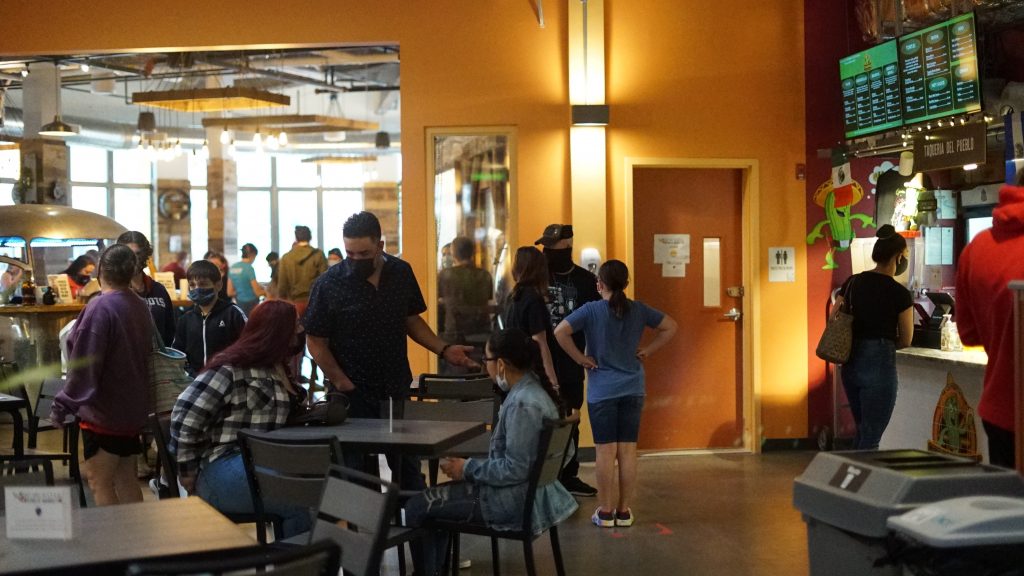
With a tidal wave of economic and cultural development, incoming businesses like restaurants and shopping and city projects, The Canal District has become a destination.
“At the Canal District Alliance (CDA), we want to create an environment where people want to live, work and play,” former president and current secretary of the board of the Canal District Alliance (CDA), Mullen Sawyer says. “We have been intentional to look for local ownership, not big chain and box stores and preserve the historic nature of the district.”
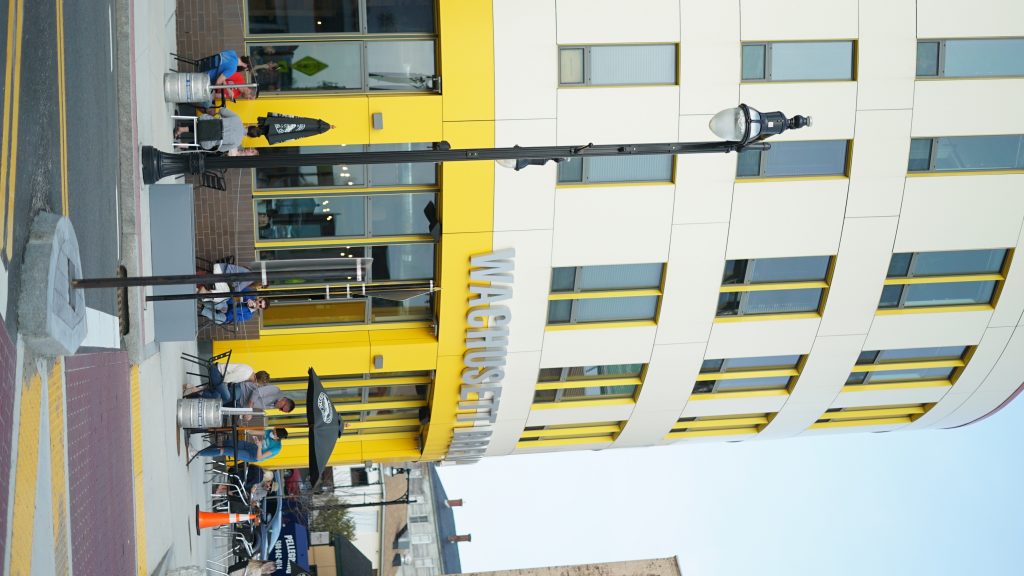
So much of the American industrial revolution took place in Worcester because of what the economic canal brought. “It changed economics forever – quadrupled the population and increased commerce and business profoundly,” Sawyer says. “It became the desired mode of business because it was cheaper – a tax evasion strategy.”
For many years, the Canal District was a thriving Jewish quarter of community. “When I grew up, Water Street was where you got bagels and bulkies,” Augustus adds. “A lot of grassroots people bought properties and had a vision of what it could be like. It was many years of doing one property at a time and slowly executing on that vision.”
The CDA has been at the forefront of that charge. “The CDA formed to revitalize this neighborhood –some people thought we were crazy,” Sawyer says. “It was abandoned and there were no plans to develop it. We very quietly and methodically continued. Being authentic and retelling history would give us a unique opportunity to develop interest in the community. It’s worked beyond our wildest expectation.”
Today, a billion dollars in development is being put into the ground, bringing good jobs, places to live, and high quality of life to the inner city. Developers like Meridian Construction are bringing new opportunities to the community that can compete with New York and Los Angeles. “We are hearing from developers that they want to be part of the tradition we’ve established – authenticity, history and culture,” Sawyer says.
More recently, there has been an interest in family activities. “The last several years, we spent time on public safety, trash and parking, so it’s nice to see that we are attracting family friendly organizations and businesses because that’s the ultimate success of our vision,” Sawyer says.
The Worcester Red Sox and Polar Park coming to Kelly Square is one of the most impactful cultural and economic additions to the neighborhood.
“I knew when the planning for the ballpark started, that it would be the economic project that people in Worcester would truly realize the quality of the community and start getting rid of any self-deprecating tendencies,” Sawyer adds. “The ballpark was always intended to fit in with the history and vision of the neighborhood and be complimentary, not problematic. And that’s exactly what’s happening.”
The Canal District has grown to become an entertainment district. “People come from all over to shop at antique vintage stores, explore the Worcester Public Market, eat at places like Birchtree Bread Company, Lock 50 or specialty shops like The Queen’s Cups, see a hockey game or practice at the Fidelity Bank hockey rink and now watch a ball game,” Augustus says. “The layout of the neighborhood also lends itself well – it’s not just one street but different areas to explore and walk around.”
Just like the other Worcester neighborhoods, the Canal District has its challenges. “Here we find similar challenges as other neighborhoods, but helping Worcester get a little away from the car culture and into the walking culture is something we’re focused on with the Canal District,” Augustus says. “It’s our job as a city to make that walk attractive and safe. The private sector is doing their share. We still have growing pains but it’s getting better.”
The future for the Canal District is to remain focused on economic and cultural development, affordable housing, public safety and continuing to bring in a diverse community and visitors from all over.
“We will continue development related to and around the ballpark,” Augustus says. “We’ve got the Table Talk Pies facility that will impact this neighborhood, The Cove, a 13-story, 318 unit residential and commercial development replacing the former Lucky Dog Music Hall/The Cove Music Hall and other housing options totaling to 1,000 units of housing, a hotel, a lab building and more.”
Shrewsbury Street

Commonly known as “restaurant row,” Shrewsbury Street has always been a thriving area of Worcester, offering some of the city’s best eats, a rich history and more. Many Italian immigrants came to Worcester and settled in this area, making it the heart of the Italian community in Worcester.
“It’s a great, unique neighborhood,” Augustus says. “It’s always had great restaurants, diners, and classic things everyone knew. With Shrewsbury Street, you always think of food. Over time, it’s become more diverse making it ‘restaurant row’ rather than a ‘little Italy.’ You’ve got Mexican, Greek, and other culinary options which also brings diverse and eclectic people from all over. It’s become a neighborhood on people’s destination list. If you’re visiting, you’re more than likely to end up there eating. This area continues to play a role in creating more diversity in the city.”
Some of the restaurant classics and stand outs include La Scala, Via Italian Table, Nuovo, Brew City Grill & Brew House, 111 Chop House, Flying Rhino Café and Watering Hole and diners like The Boulevard and The Parkway.
Shrewsbury Street also has fun spots and activities like Wormtown Brewery and Redemption Rock Brewing Company, Cristoforo Colombo Park for recreational activity, bars such as Funky Murphys and The Pint and much more.
Businesses on and around Shrewsbury Street are quite eclectic. “There are many automotive places, medical offices, gyms, law offices, small specialty stores and pharmacies,” Augustus says.
When it comes to opportunities, Shrewsbury Street shares similar and unique challenges as it’s fellow neighborhoods. “The city has a large Department of Public Works (DPW) campus right off of Shrewsbury Street,” Augustus says. “The goal has been to put a new DPW facility somewhere else and sell those 9 acres and add to the density and residents in the Shrewsbury Street area. Now that we have the ballpark and more capacity as we navigate COVID, we can re-focus on that project and hopefully bring more residents into the area.”
Augustus also noted that an apartment complex with over 340 units has been approved for development for the former Mount Carmel church lot. The complex – Alta Seven Hills – will include more than 500 parking spaces on a 5.3 acre lot on Mulberry Street. This complex includes one, two and three-bedroom apartment units, and amenities including a pet spa, swimming pool, and an electric vehicle charging station. “This will bring in hundreds of more people in the area,” Augustus adds.
All four of these neighborhoods add to the thriving and growing nature that Worcester is, has been and continues to experience. Each neighborhood has a deep appreciation for its history, embraces diverse and eclectic communities, has unique yet shared challenges and is ready for continued development. Those who continue to support and champion the city’s growth and development are excited about what the future holds for these neighborhoods and beyond.
“We just recently got the 2020 census data back. Worcester hit its highest population in its 300-year history,” Augustus says. “People are voting with their feet. We are finding that they are staying after college and proactively moving here. The quality of life these neighborhoods give people, the relative affordability, the arts and culture, the recreation scene, the culinary options – all these things are keeping and attracting people. They each have their own identity but, something we are continuously focused on is how we can better connect them. We are now the fourth largest city in the northeast. These neighborhoods are helping us grow our city.”





